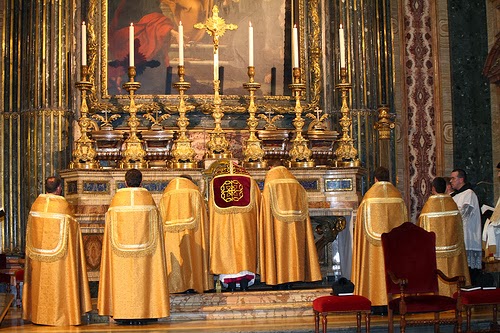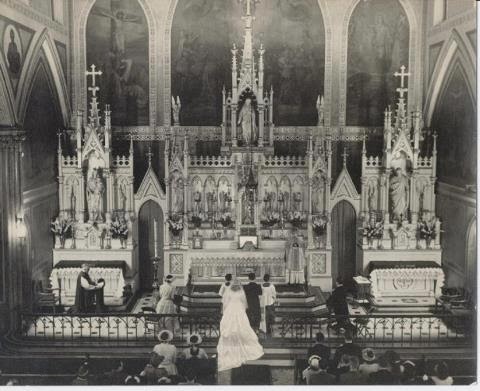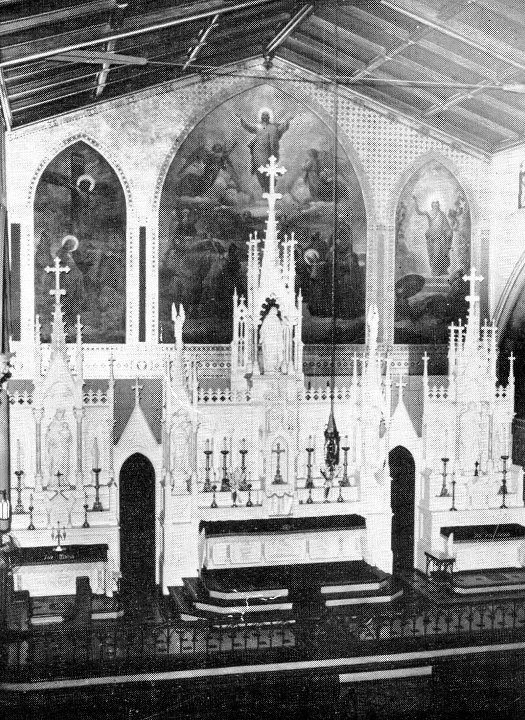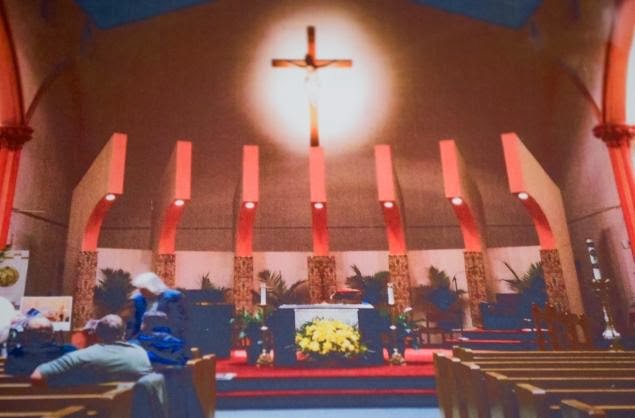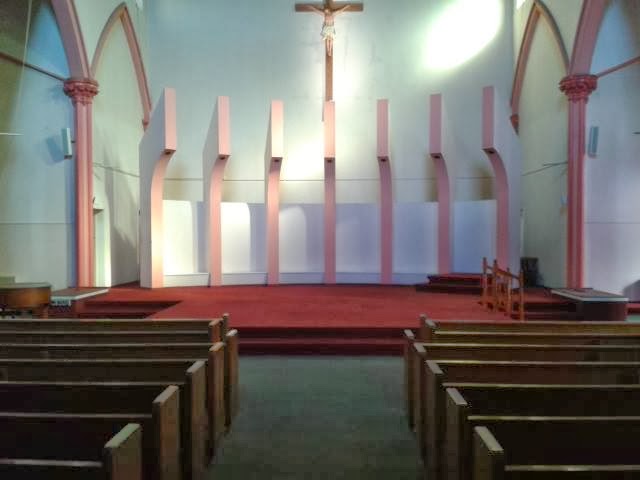NLM is very glad to present the following review by Dom Alcuin Reid of “Beyond Pius V: Conflicting Interpretations of the Liturgical Reform” by Andrea Grillo (Liturgical Press, Collegeville 2013, 126 pp., pb $19.95).
Beyond whom?
In 2007 as rumour, expectation and even fear circulated in regard to the liberalisation of the celebration of the
usus antiquior that Pope Benedict XVI was preparing, Andrea Grillo, a lay professor at the Pontifical Athenaeum of St Anselmo, Rome, published
Oltre Pio V, an argument against the Motu Proprio
Summorum Pontificum, before either its content or even its title were known. That this book was a theological and political ‘shot across the bow’ was clear.
Late last year the Liturgical Press published this (second) edition in English, which includes a new chapter considering
Summorum Pontificum and the subsequent 2011 Instruction
Universae Ecclesiae. Why? The author claims that its publication, together with Massimo Faggioli’s
True Reform (2012) and Patrick Regan’s
Advent to Pentecost (2012), from the same publisher “is surely a ‘sign of the times’ worth noting.” To Grillo’s list we can add from this publisher John Baldovin’s
Reforming the Liturgy (2009) and Piero Marini’s
A Challenging Reform (2007). Indeed: the Liturgical Press is pulling out all the stops to defend the liturgical reform of Paul VI—presumably because it is considered to be in some danger.
But Grillo’s arguments ought not to be dismissed because of his own or his publishers’ strategic intentions. Indeed, one of the central arguments of his book is historically, liturgically and theologically rock-solid; namely, that the pre-conciliar liturgical movement and the Second Vatican Council recognised the truth that the Sacred Liturgy is the
fons—the “source and summit” to use the Council’s words—of all of the activity of the Church, including its theological reflection, and that profound connection with and participation in the action of Christ in the liturgy of His Church is essential for Christian life. The reassertion of the primacy of the liturgy in the life of the Church, as Grillo is clear, was the
raison d’être for the liturgical movement and for the liturgical reform called for by the Council.
So too Grillo is correct in his emphasis on the necessary precondition of formation in the liturgy (which he calls “initiation”), in order to facilitate fruitful participation in it. And he is utterly realistic in noting that this requirement has not widely been met in recent decades—the unholy haste to erect new edifices having somewhat distracted the architects and builders from the need first to lay the necessary foundations.
Grillo rightly calls us to a renewed appreciation of these realities. However, when he asserts that “the reform of the books and rites, of the texts and gestures, is a necessary condition...for an authentic experience of the liturgy as
fons” (p. 53), his fundamental error becomes apparent. For here we have nothing less than an idolisation of “the” liturgical reform in its contingent ritual products. They are regarded as untouchable—unable to be criticised. Indeed, it follows from this stance that one cannot truly draw from the Sacred Liturgy as the source and summit of Christian life other than through these particular ritual reforms.
Where that leaves non-Western Catholics or the centuries of worshippers who lived before the 1970s one can only wonder. To be fair, Grillo would perhaps demarcate only those centuries who ‘suffered’ from what he would regard as the essentially non-participatory rites codified by St Pius V. And it is the return of such rites that worries him greatly, for this, he believes, would be a return to a liturgical life that could be neither participatory nor fruitful. Such unreformed rites could never be the
fons of Christian life. They preclude the possibility of liturgical formation.
This is Grillo’s straw man: the conviction—often found amongst liturgists and prelates in Italy—that the new rites
are themselves essential to liturgical formation, to the achievement of
participatio actuosa and to the renewal of ecclesial life, and that the
usus antiquior is, of its essence, antithetical to the achievement of these indispensible aims. Hence the book’s anxiety about Benedict XVI’s supposed liturgical regression in
Summorum Pontificum: Paul VI ushered in the long-desired age of liturgical enlightenment, as it were, and there can be absolutely no going back.
It is difficult if not impossible to produce accurate statistical evidence, but experience suggests that there are many celebrations of the modern rites today in which congregations participate minimally, despite the fact that the reformed rites have been radically simplified to facilitate their participation, and have, to a similar end, been completely vernacularised. I would argue, perhaps with Grillo, that a deficit in formation is a primary cause of this, and that without formation a congregation attending celebrations according to the modern rites in 2014 might be
less able to participate than a congregation in 1954, especially given that then, before “the” reform, the nature of the liturgy as ritual may have been at least more latently appreciated even if explicit formation in it was lacking.
What I think is self-evident, however, is that the overwhelming majority of contemporary celebrations of the Sacred Liturgy (and not only Holy Mass) according to the
usus antiquior evince a level of formation and true liturgical participation with which the Fathers of the twentieth-century liturgical movement and indeed of the Second Vatican Council would be utterly delighted.
Participatio actuosa is perhaps no more evident than in such celebrations. This may be a providential fruit of the post-conciliar proscription of these rites: people have had to invest and sacrifice substantially in order to have access to them. People frequenting them have had a long and at times costly liturgical formation. Perhaps also it is due to the very demands they place on the worshipper—one has to find ways of connecting with these rites, or indeed of allowing them to connect with us, because of their ritual complexity. Their multivalent nature has a particular value: it provides varying means of connection with Christ acting in the liturgy that perhaps better correspond to our differing temperaments and psyches.
Hence Benedict XVI was rightly able to say in his letter presenting
Summorum Pontificum: “It has clearly been demonstrated that young persons too have discovered this liturgical form, felt its attraction and found in it a form of encounter with the Mystery of the Most Holy Eucharist, particularly suited to them.” But not as a
rejection of the Sacred Liturgy as
fons, or from any fetish for a luddite liturgical past, but as a recognition that “what earlier generations held as sacred, remains sacred and great for us to,” as Benedict XVI asserted. Indeed these rites do have their “proper place” in the liturgical life—dare I say in the liturgical renewal—of the Church at the beginning of the twenty-first century. The many and predominantly young communities, personal parishes, seminaries and religious houses—in communion with the local bishop—at whose living heart is living worship according to the
usus antiquior bear ongoing testimony to this reality.
Grillo’s new and final chapter, written post-
Summorum Pontificum, confesses amazement and confusion at what he calls the “virtual reality” promoted by the Motu Proprio and the subsequent Instruction
Universae Ecclesiae, which includes, he asserts, the danger of leading the Church to nothing other than a “virtual heresy” (p. 115). In truth, this chapter is not as considered as the previous ones and a certain cynicism arises (the Instruction is parodied as “Introversae Ecclesiae”), which detracts from the book as a whole. It does indeed passionately proclaim Grillo’s fundamental stance that one must accept “the” liturgical reform absolutely and to the exclusion of all that came before (and of course, to the exclusion of any possible “reform of the reform”—which is dismissed out of hand), but such shouting is simply not convincing.
Aspects of this English edition are also unhelpful. Many of the works cited by the author which appear in English translation are not referenced in the footnotes. So too it repeats an error in the Italian edition: the formative experience that prompted Pius Parsch to engage in the liturgical apostolate took place in the
First, not the Second World War (p. 33). It is also unfortunate that the author did not take the opportunity of this edition to engage with the relevant parts of the 2007 Apostolic Exhortation
Sacramentum Caritatis in his consideration of
participatio actuosa.
Grillo describes this book as a “militant defense of the reform” (p. 74). “Each of us formed after the Second Vatican Council—and now we make up the great majority of the church—is beyond the Mass of Pius V,” we are told. “Like it or not we cannot go backward. In the ordinary pastoral work of the great majority of dioceses, the celebration of some ‘ancient use’ is neither practical nor realistic” (p. 112). The growing number of dioceses who find it both practical and realistic to include the regular celebration of the
usus antiquior gives the lie to the latter part of this assertion.
But yes, we must move forward. And in doing so we shall indeed be moving (further) “beyond Pius V.” But we shall also, rightly, be moving beyond Paul VI—a journey for which Joseph Cardinal Ratzinger, both through his critical examination of the liturgical reform as a cardinal and through his acts and teaching as Pope Benedict XVI—in particular his gift to the Church of
Summorum Pontificum—has given us much guidance indeed.
Dom Alcuin Reid is a monk of the Monastère Saint-Benoît, in the diocese of Fréjus-Toulon, France, and editor of Sacred Liturgy: The Source and Summit of the Life and Mission of the Church
, due for publication by Ignatius Press in May. 